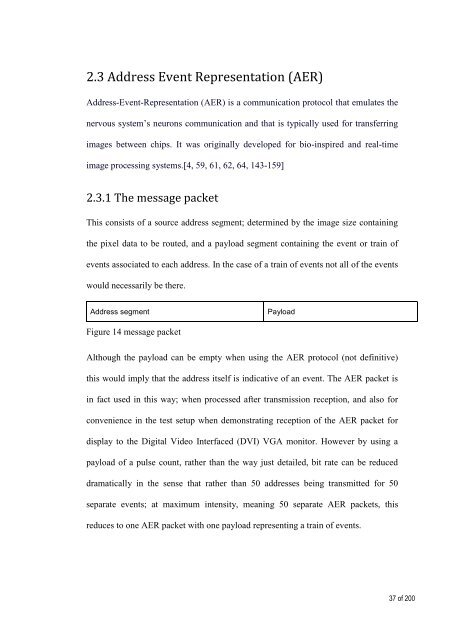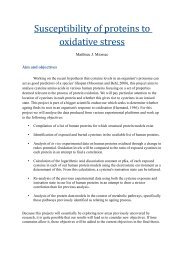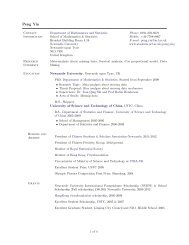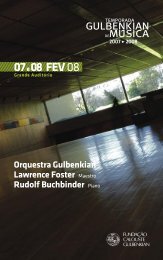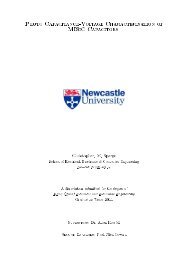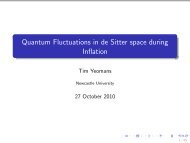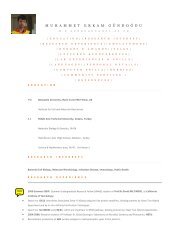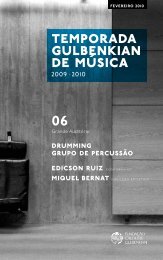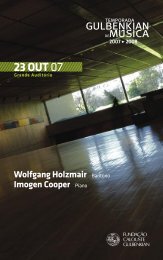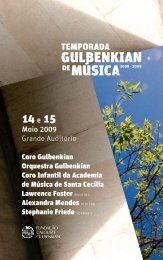Retinal Prosthesis Dissertation - Student Home Pages
Retinal Prosthesis Dissertation - Student Home Pages
Retinal Prosthesis Dissertation - Student Home Pages
Create successful ePaper yourself
Turn your PDF publications into a flip-book with our unique Google optimized e-Paper software.
2.3 Address Event Representation (AER)<br />
Address-Event-Representation (AER) is a communication protocol that emulates the<br />
nervous system’s neurons communication and that is typically used for transferring<br />
images between chips. It was originally developed for bio-inspired and real-time<br />
image processing systems.[4, 59, 61, 62, 64, 143-159]<br />
2.3.1 The message packet<br />
This consists of a source address segment; determined by the image size containing<br />
the pixel data to be routed, and a payload segment containing the event or train of<br />
events associated to each address. In the case of a train of events not all of the events<br />
would necessarily be there.<br />
Address segment<br />
Payload<br />
Figure 14 message packet<br />
Although the payload can be empty when using the AER protocol (not definitive)<br />
this would imply that the address itself is indicative of an event. The AER packet is<br />
in fact used in this way; when processed after transmission reception, and also for<br />
convenience in the test setup when demonstrating reception of the AER packet for<br />
display to the Digital Video Interfaced (DVI) VGA monitor. However by using a<br />
payload of a pulse count, rather than the way just detailed, bit rate can be reduced<br />
dramatically in the sense that rather than 50 addresses being transmitted for 50<br />
separate events; at maximum intensity, meaning 50 separate AER packets, this<br />
reduces to one AER packet with one payload representing a train of events.<br />
37 of 200


